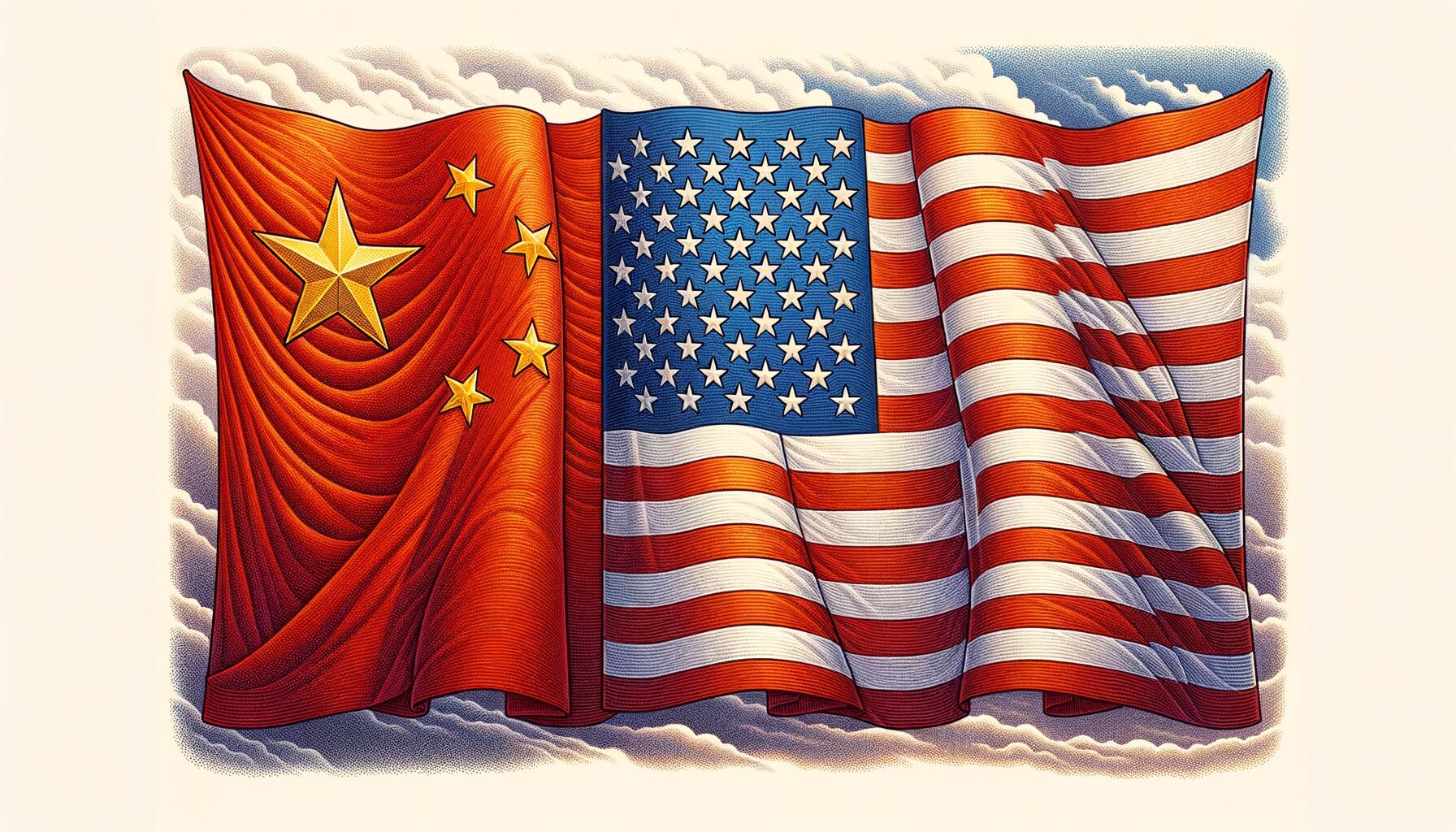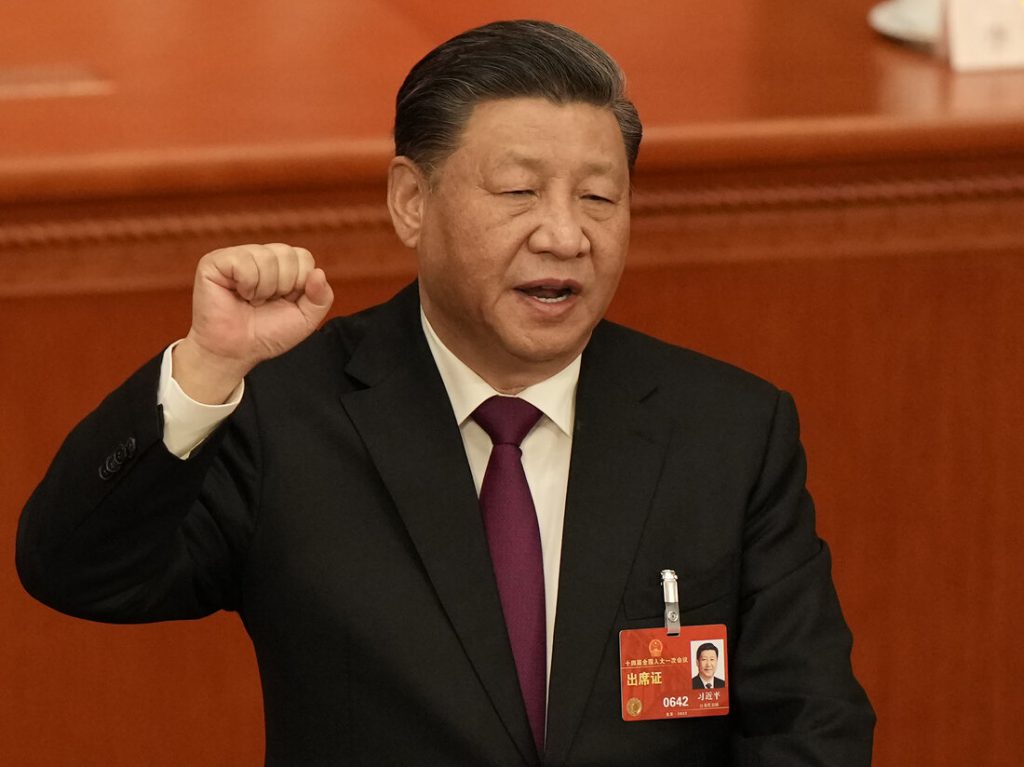Is China Now Stronger Against Trump’s Trade War Than in 2018?

In 2025, the trade tensions between China and the US have intensified to unprecedented levels. President Trump’s recent imposition of 125% tariffs on Chinese imports has sparked some serious questions about China’s ability to withstand economic pressure compared to the 2018 conflict.
Also Read: Sanctions on Russia Are Rapidly Accelerating De-dollarization
How China’s Economic Strength and Trade Policies Have Evolved in 2025

China’s Strategic Preparation
Since the first trade war in 2018, China has been preparing for potential renewed conflicts. At the time of writing, these preparations are being put to the test in the ongoing Trade war.
Marc Lanteigne, China’s expert at The Arctic University of Norway, states:
“China has had a lot of time to prepare for a resumption of the trade war. They were caught a bit off-guard in 2018.”
Unlike other nations, China responded immediately to Trump’s initial tariffs with matching measures, and also took additional steps to strengthen its position.
Xin Sun, specialist on the Chinese economy at King’s College London, noted:
“China retaliated while all the other countries have been taking a very cautious approach and prioritising, or preferring to negotiate, with the United States.”
Reduced US Market Dependence
A key development in China’s trade relations is Beijing’s decreased reliance on American markets, such as shifting focus toward other global partners.
Xin Sun explained:
“China’s export reliance on the United States has been reduced significantly. Back in 2018, exports to the US accounted for around 20 percent of China’s total exports. Now that figure has been decreased to around 14 percent.”
Johannes Petry from Goethe University Frankfurt added:
“China’s trade with Global South countries has actually overtaken its trade with the G7. Compared to ten years ago, they’re not as sensitive anymore to US tariffs.”
Also Read: US Inflation Drops to 2.4% in March 2025
Economic Challenges
Despite better preparation for this trade conflict, China faces economic vulnerabilities in 2025.
Johannes Petry observed:
“China’s weakness at the moment is that it’s in economic transition. The government is trying, quite forcefully, to move the country into a new growth model away from infrastructure spending and housing and real estate, and moving more into technology.”
The ongoing US-China tensions create additional pressure on an already transitioning economy. However, China has substantial economic tools at its disposal during this trade war, and the government appears ready to use them if necessary.
Strategic Advantages
China holds significant leverage through its control of rare earth minerals, which are critical for high-tech manufacturing. This gives Beijing an important card in the US-China trade conflict that wasn’t fully utilized previously.
Xin Sun pointed out:
“China can impose export controls over a wider range of rare earths because currently China only imposes bans on rare earths for certain elements, but not all of them. If tariffs – the trade wars – escalate even further, it’s a possibility that China could apply export controls over a wider range of rare earths.”
This represents an important advantage in China’s trade war strategy that wasn’t fully leveraged in 2018.
Also Read: How Much Would $2,000 Invested in Bitcoin During Its First Halving Turn Into Today?
Global Alliances
The broad scope of Trump’s tariffs, which affect US allies as well, may inadvertently strengthen China’s position in this trade conflict and alter China-Trump trade relations going forward.
Marc Lanteigne observed:
“Had Trump not also placed tariffs on, for example, the European Union, Japan and Korea, he probably could have convinced these countries to link resources and put even more pressure on China. I don’t think that’s going to happen under current circumstances.”
China is actively seeking international partners to counter US pressure during this trade war. A China Daily editorial declared: “Global unity can triumph over trade tyranny.”
As tensions escalate, both sides appear determined to stand their ground. The full impact of this trade war in 2025 remains to be seen, but it’s already causing significant market uncertainty.
China’s Ministry of Commerce vowed in a policy statement:
“If the US insists on further escalating its economic and trade restrictions, China has the firm will and abundant means to take necessary countermeasures and will fight to the end.”
Is China Now Stronger Against Trump’s Trade War Than in 2018?

In 2025, the trade tensions between China and the US have intensified to unprecedented levels. President Trump’s recent imposition of 125% tariffs on Chinese imports has sparked some serious questions about China’s ability to withstand economic pressure compared to the 2018 conflict.
Also Read: Sanctions on Russia Are Rapidly Accelerating De-dollarization
How China’s Economic Strength and Trade Policies Have Evolved in 2025

China’s Strategic Preparation
Since the first trade war in 2018, China has been preparing for potential renewed conflicts. At the time of writing, these preparations are being put to the test in the ongoing Trade war.
Marc Lanteigne, China’s expert at The Arctic University of Norway, states:
“China has had a lot of time to prepare for a resumption of the trade war. They were caught a bit off-guard in 2018.”
Unlike other nations, China responded immediately to Trump’s initial tariffs with matching measures, and also took additional steps to strengthen its position.
Xin Sun, specialist on the Chinese economy at King’s College London, noted:
“China retaliated while all the other countries have been taking a very cautious approach and prioritising, or preferring to negotiate, with the United States.”
Reduced US Market Dependence
A key development in China’s trade relations is Beijing’s decreased reliance on American markets, such as shifting focus toward other global partners.
Xin Sun explained:
“China’s export reliance on the United States has been reduced significantly. Back in 2018, exports to the US accounted for around 20 percent of China’s total exports. Now that figure has been decreased to around 14 percent.”
Johannes Petry from Goethe University Frankfurt added:
“China’s trade with Global South countries has actually overtaken its trade with the G7. Compared to ten years ago, they’re not as sensitive anymore to US tariffs.”
Also Read: US Inflation Drops to 2.4% in March 2025
Economic Challenges
Despite better preparation for this trade conflict, China faces economic vulnerabilities in 2025.
Johannes Petry observed:
“China’s weakness at the moment is that it’s in economic transition. The government is trying, quite forcefully, to move the country into a new growth model away from infrastructure spending and housing and real estate, and moving more into technology.”
The ongoing US-China tensions create additional pressure on an already transitioning economy. However, China has substantial economic tools at its disposal during this trade war, and the government appears ready to use them if necessary.
Strategic Advantages
China holds significant leverage through its control of rare earth minerals, which are critical for high-tech manufacturing. This gives Beijing an important card in the US-China trade conflict that wasn’t fully utilized previously.
Xin Sun pointed out:
“China can impose export controls over a wider range of rare earths because currently China only imposes bans on rare earths for certain elements, but not all of them. If tariffs – the trade wars – escalate even further, it’s a possibility that China could apply export controls over a wider range of rare earths.”
This represents an important advantage in China’s trade war strategy that wasn’t fully leveraged in 2018.
Also Read: How Much Would $2,000 Invested in Bitcoin During Its First Halving Turn Into Today?
Global Alliances
The broad scope of Trump’s tariffs, which affect US allies as well, may inadvertently strengthen China’s position in this trade conflict and alter China-Trump trade relations going forward.
Marc Lanteigne observed:
“Had Trump not also placed tariffs on, for example, the European Union, Japan and Korea, he probably could have convinced these countries to link resources and put even more pressure on China. I don’t think that’s going to happen under current circumstances.”
China is actively seeking international partners to counter US pressure during this trade war. A China Daily editorial declared: “Global unity can triumph over trade tyranny.”
As tensions escalate, both sides appear determined to stand their ground. The full impact of this trade war in 2025 remains to be seen, but it’s already causing significant market uncertainty.
China’s Ministry of Commerce vowed in a policy statement:
“If the US insists on further escalating its economic and trade restrictions, China has the firm will and abundant means to take necessary countermeasures and will fight to the end.”

